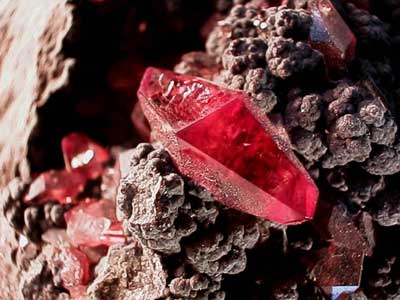Rutile, also known as titanium dioxide, is an important titanium ore widely used in metallurgy, chemical industry, construction materials, and other fields. The beneficiation and deep processing of rutile are crucial links in the titanium ore industry, directly affecting the efficiency of titanium resource development and value-added. This article will explore what rutile is, rutile beneficiation methods, deep processing techniques, and future development directions.

Rutile ore is an important titanium ore containing rutile crystals. Common associated minerals with rutile include quartz, ilmenite, apatite, garnet, calcite, and perovskite.
Rutile is a tetragonal crystal with well-developed tetragonal prismatic or acicular crystal forms, occurring in aggregates or dense blocky forms. It is red, reddish-brown, yellow, or orange-yellow in color, with iron-rich specimens appearing black, and streaks ranging from yellow to light brown. It has a diamond-like luster, while iron rutile exhibits a semi-metallic luster.
The beneficiation of rutile ore mainly includes physical beneficiation and chemical beneficiation methods:
Physical beneficiation
It mainly utilizes the differences in physical properties between rutile ore and gangue minerals for separation. Commonly used physical beneficiation equipment includes heavy medium separators, magnetic separators, and gravity separators.
Heavy medium separation: This method utilizes the density difference between rutile and other gangue minerals for separation. It is often used for processing sand-type rutile using shaking tables, spiral chutes, or spiral concentrators for tailings disposal.
Magnetic separation: This method utilizes magnetic separators to separate minerals with magnetic properties from rutile. Common equipment includes single-disc magnetic separators, double-disc magnetic separators, and dry magnetic separators.
Chemical beneficiation
It involves changing the surface properties of rutile ore and gangue minerals by adding reagents to achieve selective adsorption and separation during the flotation process. Common chemical beneficiation reagents include collectors, frothers, and depressants.
Rutile flotation mainly depends on the selection of reagents, which force rutile and other minerals to exhibit hydrophobicity during flotation operations. Commonly used flotation equipment includes XCF, KYF, CLF, SF, and JJF flotation cells, while common reagents include benzyl phosphonic acid, oxidized paraffin soap and oleic acid, alkyl α-hydroxy phosphonic acid, styrene phosphonic acid, salicyl hydroxamic acid, and C7-9 hydroxamic acid.
The deep processing of rutile ore mainly includes titanium metal refining, preparation of titanium dioxide, and production of titanium tetrachloride.
Refining titanium metal: Rutile ore undergoes beneficiation and roasting steps to obtain titanium oxide, which is then refined into titanium metal through reduction processes.
Preparation of titanium dioxide: Rutile ore is processed through beneficiation, crushing, and sulfuric acid methods to obtain titanium dioxide, which is used in coatings, plastics, rubber, and other fields.
Production of titanium tetrachloride: Rutile ore is processed through chlorination to obtain titanium tetrachloride, which is used in the synthesis of organic compounds, dyes, and other chemical products.
Green environmental protection: Strengthen environmental protection measures in the beneficiation and deep processing of rutile ore, promoting green and low-carbon development.
Intelligent technology: Introduce artificial intelligence, big data, and other technologies to optimize beneficiation process flows, improve production efficiency, and product quality.
Comprehensive resource utilization: Actively conduct research on the comprehensive utilization of rutile ore resources, explore diversified industrial development models, and enhance the efficiency of resource utilization.
Product upgrades: Increase research and development efforts on high-end products, enhance the added value of titanium products, and expand the application of titanium products in aerospace, biomedicine, and other fields.
Rutile ore beneficiation and deep processing are important links in the titanium ore industry, directly affecting the efficiency of titanium resource development and value-added. With technological progress and industrial upgrading, the rutile beneficiation industry will continue to develop towards green environmental protection, intelligent technology, comprehensive resource utilization, and product upgrades, making positive contributions to the sustainable development of the titanium ore industry.